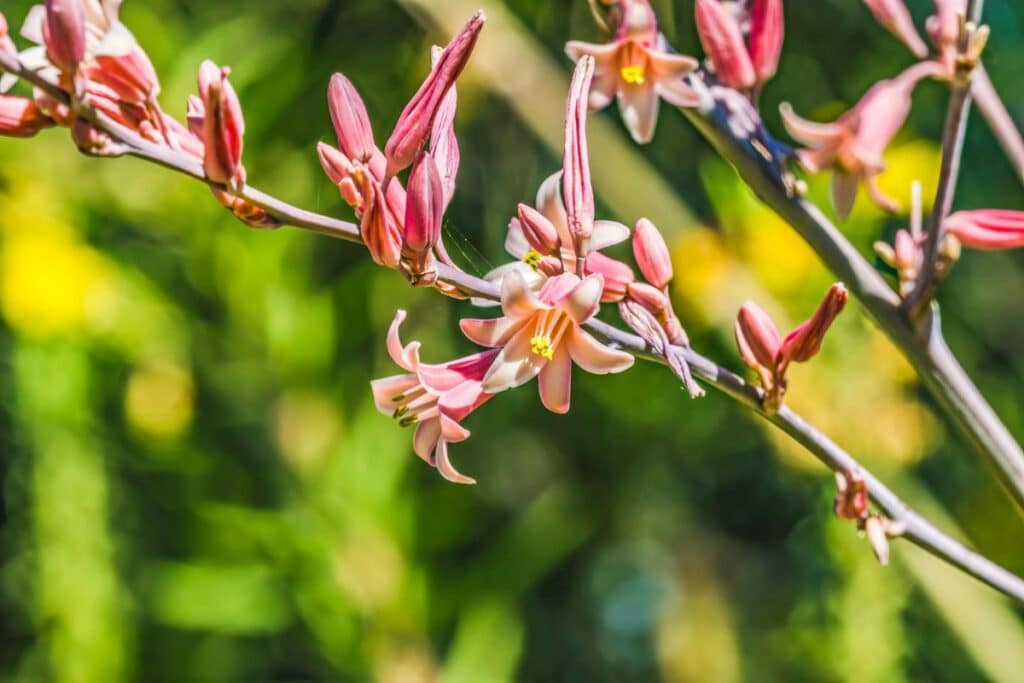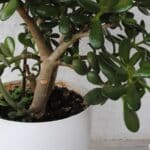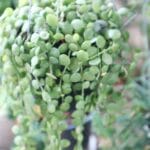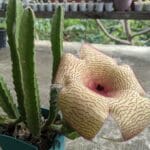Red Yucca (Hesperaloe parviflora), also known as coral yucca, redflower false yucca, or hummingbird yucca because hummingbirds love it so much, is a wonderful water-efficient succulent to add to gardens in dry climates.
With its spiky leaves and crimson-red flowers, this plant will add lots of texture and contrast to your garden.
For a particularly beautiful garden, you should grow red yucca with companion plants such as cacti, aloe vera, texas sage, English ivy, feathergrass, or agave. These companions are great for filling out your garden and will complement your yucca plants so they will look even more attractive.
What to Plant with Red Yucca
For companion planting with red yucca, it is very important to select plant species that have a similar growing season and nutritional needs.
When all the plants in your garden have similar needs, it becomes much easier to keep your garden healthy and vibrant.
Red yucca is a drought-tolerant plant that can survive on just rainfall even in hot and sunny regions.
The waterwise plant will grow at its best if you plant it in sandy soil in direct sun but it can tolerate partial shade positions. This hardy plant will, however, suffer from root rot if it receives too much water.
Let’s take a look at some companion plants for yucca that also tolerate dry climates and lots of direct sunlight.
Cactus Plants
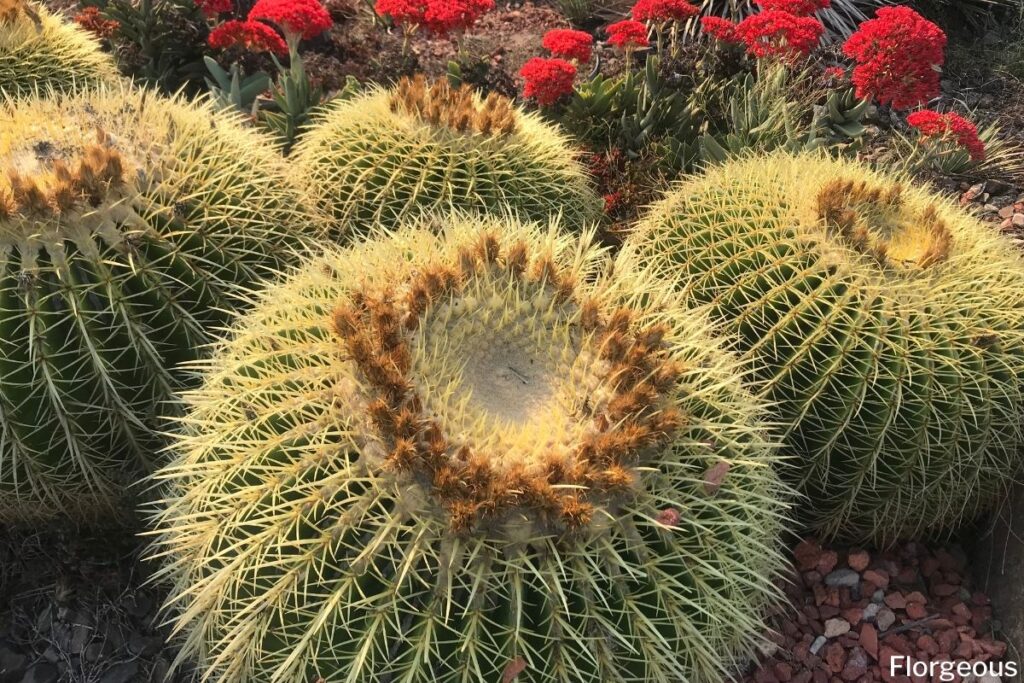
Cactus plants (Cactaceae) are ideal red yucca companion plants because they will add lots of dimension and interest to your garden thanks to their unique design. There are more than 2,000 different species of cacti and they range from small orbs to tall towering plants.
Cactus plants have a very similar growing requirement. These desert plants require lots of direct sunlight, good drainage, and they flourish in warmer temperatures. As with red yucca, they hardly need any water to survive.
You can pair different species of cactus plants with red yucca in dry rock gardens to create an interesting effect. The red yuccas alongside a blend of spherical or linear cacti can make your garden look rich and the vibrant red yucca flowers will create lots of contrast.
Aloe Vera
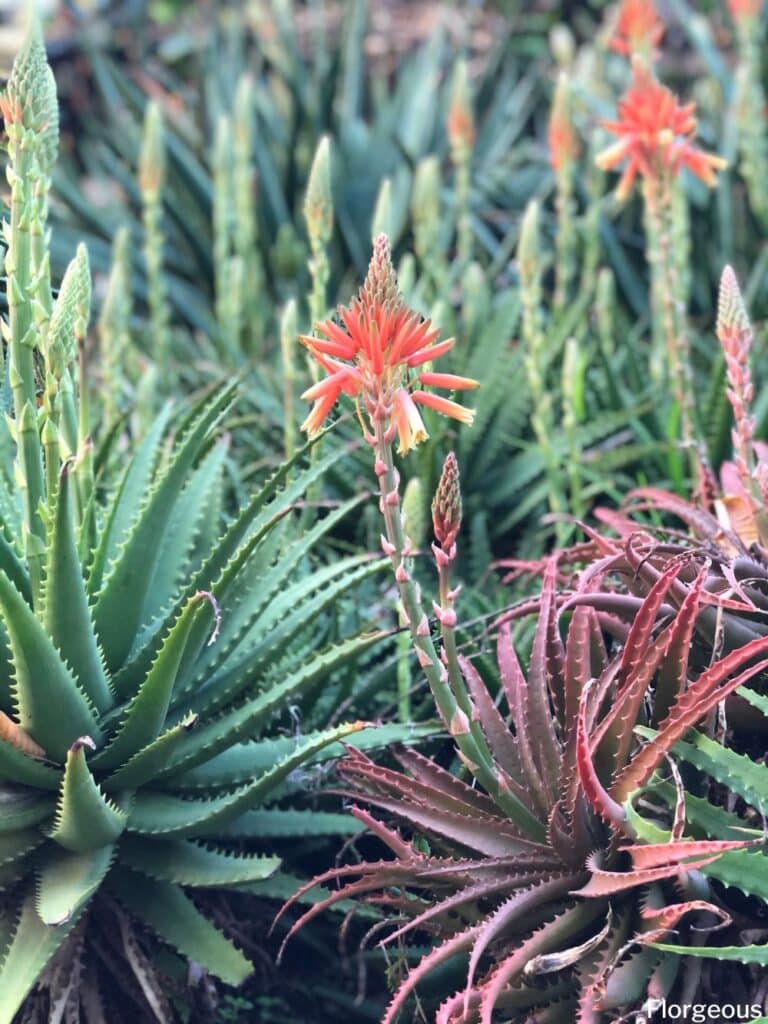
Aloe vera (Aloe barbaabensis miller) isn’t just a good companion plant for red yucca, it is also very useful due to all of its medicinal properties. This succulent can be used to treat a huge variety of skin conditions, it has antioxidant properties, and can be used to treat various medical conditions.
These aloe plants can also be a very attractive addition to rocky gardens and it grows very well in containers.
Aloe vera should be planted in well-drained soil and it shouldn’t be watered too often. This plant is at its happiest in full sun but can tolerate indirect light or dappled shade. In deep shade, the plant will, however, become leggy.
When you are planting aloe vera and red yucca together, it is best to leave a little bit of room between these plants so they will have lots of room to expand and so both can receive adequate sunlight.
Texas Sage

Texas sage (Leucophyllum frutescens), also known as silver leaf, purple sage, or barometer bush, is a wonderful addition to dry landscapes. The silver velvety leaves of this low-maintenance plant are great for adding contrast to your garden and it produces vivid purple flowers that can look rather striking.
This evergreen perennial should be planted in full sun or it won’t produce as many flowers. Texas sage loves warm climates but it can tolerate cooler temperatures. The herb should be grown in free-draining soil because its root system will start to rot if it is overwatered.
You can mix and match Texas sage all over your garden for a loose and wavy effect. This shrub can also be trimmed into spheres or hedges if you prefer a more ornamental effect.
Some gardens love to use purple sage as a backdrop behind bushes of red yucca because this effect will help the red flowers stand out a lot more.
English Ivy
If you are looking for a ground cover or natural mulch for your dry garden bed then you can consider English ivy (Hedera helix).
This woody vine will spread all over your garden bed and is very helpful for keeping the soil cool for longer. As a natural mulch, it can also enhance your soil quality.
Gardeners do, however, need to be careful not to position this vine plant in direct sun. It can tolerate bright light but won’t grow well in direct sun. It is a good option for yucca plants on a patio but might not survive out in the open gardens.
This vine plant is considered a good companion plant because it requires very little water to survive.
There are lots of different ways to pair English ivy with yucca plants. Some gardeners prefer to grow it as a backdrop over a rocky wall behind yucca plants, some like to add it to the front of the garden bed as a living mulch, and others love to use this vine as a spiller to trail over potted yuccas.
Mexican Feathergrass
Mexican feathergrass (Nassella tenuissima), also known as fine-stem needlegrass or Argentine needlegrass, is often used in xeriscape projects or rocky gardens because it is great for softening up your spaces.
The grasses have fine textured leaves and delicate blooms that can give your garden a wavy effect.
Feathergrass are good companion plants because they grow best in full sun in free-draining soil.
These grasses are also quite hardy and only need to be watered once a week during their first growing season after which they will only need occasional watering.
These two plants can look attractive if you grow them in clumps along with other plants in your rocky spaces. The pairing will look especially charming from early spring to summer when the yucca plant is in full bloom.
Agave
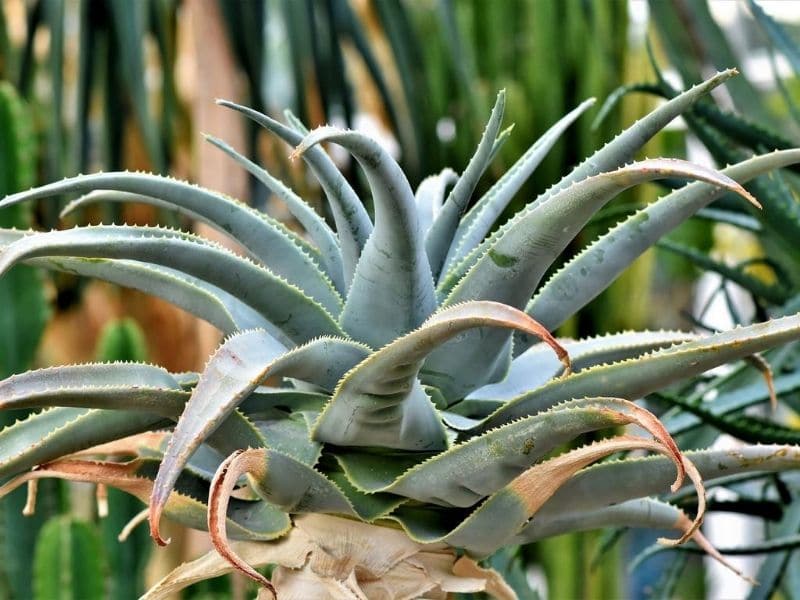
Agave (Agave), also known as century plants, maguey, or American aloe, are excellent companion plants if you want to add something large and showy to your garden.
These succulents produce large blue-grey leaves with spiny tips that can be very attractive. Agave tequilana variety is an example.
American aloe prefers gritty soil with good drainage and it should be planted in full sun. The plants grow well in dry regions and require very little water.
Since agave can become quite large, it is best to establish it in an open area towards the back of your garden. You can then add bunches of yucca plants around the edges or in front of the large plant. The red flowers and thin spiky leaves of the yucca plant will help soften up the look of this plant.
Avoid planting this succulent right next to walkways because its spiky tips can cause a lot of pain should you accidentally bump into them.
What NOT to Plant with Red Yucca
Red yucca can get along well with a wide range of other plants but there are many species that cannot tolerate the heat and drought that these low-maintenance plants require.
It is best not to grow your yucca plant in an area that receives too much moisture and shade.
Shade and moisture-dependent plants like hostas, ferns, begonias, hydrangeas, and plantain lilies probably won’t survive in the dry and sunny areas that your drought-tolerant plant species require.
Landscaping Ideas with Yuccas
After discovering so many great companions to pair with red yucca, it is time to take a look at different ways to use them in your garden.
Here is a quick look at some interesting landscaping concepts to consider if you want to create showy water-efficient gardens.
Mixed Borders for Gravel Driveways
Gravel driveways are very trendy at the moment because they are quick and affordable to install and a lot more water efficient compared to lawns.
If your gravel driveway is looking a bit dull then you can consider a showy natural border of yucca plants and other drought-tolerant species like Texas sage and feathergrass.
These mixed borders will add lots of color and dimension to your garden and the vivid colors will create plenty of contrast with the gravel scapes.
Xeriscape Gardens
Xeriscape gardens are the ultimate solution for drought-stricken areas or for property owners who want to create low-maintenance gardens.
This type of garden involves using lots of natural materials in the form of large rocks, gravel, tree trunks, succulents, cacti, and drought-tolerant flowers to create charming spaces.
For a successful rock garden, you should pair lots of rocky features with interesting drought-tolerant plants. These types of gardens tend to look especially charming with garden features like raised garden beds or sloped scapes.
Gardeners then position yucca plants, cacti, sage, American aloe, aloe vera, and other desert plants in layers about the garden to create some depth and height.
With these gardens, it is typically a good idea to position taller plants like Mexican giant cardon cacuts in the background and to layer with shorter plants towards the front of your yard.
Container Gardens
Yucca plants and many other drought-tolerant species can grow very well in containers. You can stock up on interesting garden pots and create a charming container garden.
A lane of potted red yuccas and aloe vera can look quite charming on a patio or alongside your garden walls.
You can also create mixed containers by pairing red yucca with a vine plant like English ivy that can trail over the edge of your container for an interesting spiller effect.
Final Thoughts
Red yucca companions plants like cactuses, aloe, sage, English ivy, feathergrass, or American aloe can look charming alongside one another in your garden and will certainly enhance the aesthetics of your garden.
We hope that our guide gave you some inspiration or helped you discover different ways to add some dimension and charm to your garden bed so you can create stunning water-efficient spaces.
See more:
*image by billperry/depositphotos

